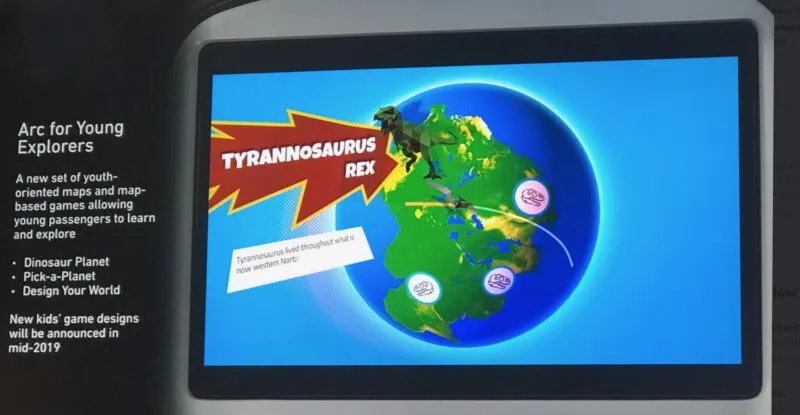 Panasonic Avionics is today marking the two-year anniversary of the launch of Arc, its 3D in-flight moving map platform, by unveiling a range of new and upcoming features.
Panasonic Avionics is today marking the two-year anniversary of the launch of Arc, its 3D in-flight moving map platform, by unveiling a range of new and upcoming features.
Since its debut two years ago at Aircraft Interiors Expo 2019, Arc has experienced one of the highest adoption rates of any Panasonic Avionics digital service, with confirmed orders with 17 airlines globally on over 300 aircraft.
Andrew Mohr, Vice President of Digital Solutions at Panasonic Avionics, said: “Airline adoption of Arc has been beyond our initial expectations. Our airline customers have responded positively to the new value streams we’re bringing to the in-flight map experience. These include sophisticated design, innovative new features, and the cross-leverage with our other in-flight entertainment and communications services, including new monetization opportunities.”
“With Arc, we are enabling airlines to utilize in-flight maps as a primary tool for customer engagement and service. Its rapid adoption highlights the importance these new approaches represent to our customers.”
Panasonic Avionics has also launched the first new round of Arc features, including Arc for Young Explorers and OneMedia integration.
Arc for Young Explorers is the first in a series of features targeted to young travelers. It brings them back in time and enables them to fly and explore the world as a Jurassic-era flying dinosaur. Points of interest are replaced by oversized dinosaurs, revealing trivia, fun facts, and animations about the giant beasts that roamed Earth millions of years ago. Bright, cheerful colors and imaginations of prehistoric sounds and movement fill the screen.
Arc’s integration with OneMedia enables it to act as a new medium for monetization through its alignment with Panasonic Avionics’ in-flight advertising platform. It creates new advertising inventory across the wide range of Arc’s map views, and tie-ins to cross-IFE advertising campaigns.
In addition to these new releases, Panasonic Avionics is in the process of rolling out the new Arc Studio map designer’s tool. Arc Studio gives airlines direct control over a wide range of map features and content. It enables them to modify point of interest data and layers, map script configurations to add or modify media and promotional campaigns, along with the ability to deploy changes directly to their aircraft.
Mohr adds: “Arc Studio gives in-flight maps the flexibility and longevity expected out of today’s digital solutions. It puts Arc at the service of the airline to employ as a promotional tool, enabling them to create unique designs and configurations that can be deployed on a per flight or route basis. Airlines can easily leverage Arc to execute their overall IFEC value strategies.”
“We have designed Arc as a flexible, creative and evolutionary platform, and are developing further enhancements which we will be unveiling in the months ahead.”
About Panasonic Avionics Corporation
Panasonic Avionics Corporation is the world’s leading supplier of inflight entertainment and communication systems. The company’s best-in-class solutions, supported by professional maintenance services, fully integrate with the cabin enabling its customers to deliver the ultimate travel experiences with a rich variety of entertainment choices, resulting in improved quality communication systems and solutions, reduced time-to-market and lower overall costs.
Established in 1979, Panasonic Avionics Corporation, a U.S. corporation, is a subsidiary of Panasonic Corporation of North America, the principal North American subsidiary of Panasonic Corporation. Headquartered in Lake Forest, California with over 3,500 employees and operations in 60 global locations, it has delivered over 15,400 IFE systems and 2,500 in-flight connectivity solutions to the world’s leading airlines.
Featured image credited to Mary Kirby










